NOTE: For prior parts in the Hizballah Cavalcade series you can view an archive of it all here.
—
What is the Liwa’a Abu Fadl al-Abbas (LAFA)?: Assessing Syria’s Shia “International Brigade” Through Their Social Media Presence
By Phillip Smyth
Click here for a PDF version of this post
Making its first appearances in the fall of 2012, Liwa’a Abu Fadl al-Abbas (Abu Fadl al-Abbas Brigades or LAFA) represents a new addition to the Syrian battlefield and serves as another example of increased sectarianism in the Syrian Civil War. The organization claims its role is to defend the Sayida Zaynab Shrine and surrounding Shia populated neighborhoods located in southern Damascus.[1] The group is made-up of a mixture of a small number of native Syrian Shia with a majority of foreign Shia Muslim fighters.
LAFA has also maintained an outward appearance which mirrors the same type of spirit once found with the volunteer International Brigades during the Spanish Civil War. Despite the presented narrative, this does not necessitate the group is an ad hoc collection of individual Shia Muslims. The group heavily utilizes fighters originating from Iranian-backed organizations (such as Iraq’s Kata’ib Hizballah and Asa’ib Ahl al-Haq), has uniformed personnel, new weapons, a recognizable leadership structure, and openly identifies with Lebanese Hizballah. These factors point to an extremely organized fighting group and deeper levels of Iranian involvement in the organization.
Unlike larger and more established militant Shia Islamist groups such as Lebanon’s Hizballah or Iraq’s Asa’ib Ahl al-Haq, LAFA has no official website or official online forums. The group finds most of its internet representation through a mixture of quasi-official Facebook pages and YouTube stations. In fact, for the Western and Arabic-language press, LAFA’s existence only came to light when a YouTube music video featuring the group’s fighters was made public.[2] Thus, fifteen pro-LAFA Facebook pages, five Facebook pages associated with Lebanese Hizballah, one Hizballah forum, three pro-Muqtada al-Sadr forums, and five pro-LAFA/pro-Hizballah YouTube stations were reviewed for this study.
“Labayka Ya Zaynab!”: Abu Fadl al-Abbas’s Messaging Campaign & Narrative
Designating itself firmly as a Shia militant organization, LAFA utilizes Shia Islamic imagery, slogans, and other symbols to push its case to Shia Muslims. As stated by the group and its supporters, the Abu Fadl al-Abbas Brigade’s main purpose is to “Defend the Saydah Zaynab Shrine”. Their specified raison d’etre, immediately projects an image of “Protectors” simply reacting to a foe bent on the destruction of Shi’ism.
A common chant heard and written by LAFA members and supporters is “Labayka Ya Zaynab!” (“We are here for you Zaynab”). The slogan directly refers to the defense of the Zaynab Shrine and has also become a rallying cry for Shia Islamist groups fighting in Syria. At funerals held for Lebanese Hizballah members killed in Syria, the same slogan regularly chanted. LAFA militants regularly say the phrase as they engage Syrian rebel forces. The cry reinforces the line that the group’s sole function is the protection of the Zaynab Shrine and that they are worthy of praise for their sacrifice for the entirety of Shi’ism.
The Shia Symbolism behind LAFA’s name originates with the story of Abu Fadl al-Abbas (A.K.A. Abbas Ibn Ali). Abu Fadl al-Abbas was a trusted and brave warrior who fought for his father, Imam Ali ibn Abi Talib.[3] Serving with Imam Husayn’s forces during the religiously important and historic Battle of Karbala, Abu Fadl al-Abbas had both of his arms cut off attempting to collect water for his besieged compatriots. Symbolizing his willingness to sacrifice and loyalty, until he was killed, Abbas continued to carry water back to his forces using his mouth.[4]
LAFA has attempted to utilize this story in their propaganda material. The image of a severed arm was actually featured in a number of pro-LAFA videos.[5] Additionally, the green flag on LAFA’s logo represents the flag Abu Fadl al-Abbas carried when he acted as flag bearer for Imam Husayn during the Battle of Karbala.
The story taps into the very roots of the Sunni-Shia split. For Shia, the Battle of Karbala symbolizes their rejection of oppressive Sunni rule. Combined with what appears to be a clear Sunni Islamist drive to dislodge Shia presence in Syria, for many Shia the story resonates in the contemporary sense. Since the shrine and neighborhoods LAFA claims to protect are surrounded by pockets of Syrian rebels, the field of battle is also reminiscent of the Battle of Karbala. With these prevailing themes, LAFA taps into the culturally important concept of Shia self-sacrifice. These themes were used extensively by Iran’s current leadership and has been refered to by some scholars as the, “Karbala narrative”.[6]
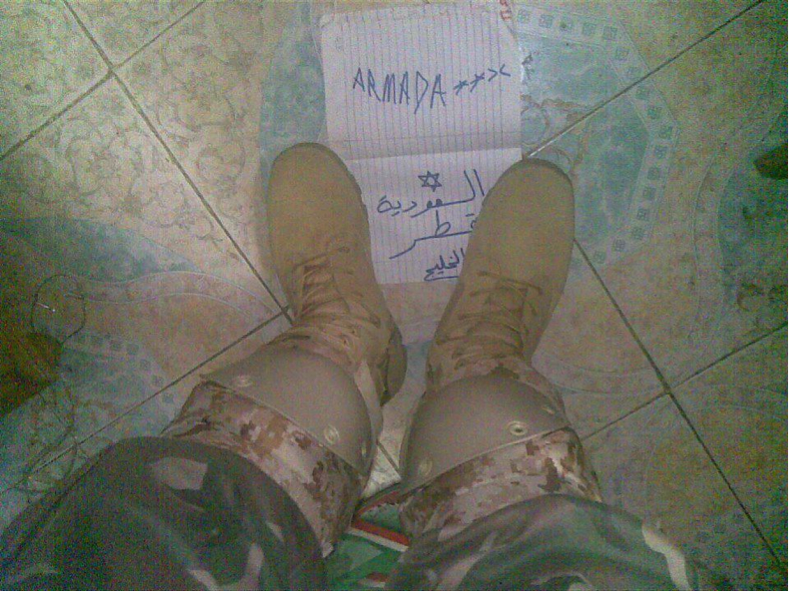
Figure 1: Another example of LAFA pushing the “Israel/Jewish-Sunni Gulf Arab” or “Israel/Jewish-Takfiri” conspiracy narrative. A LAFA member steps on a paper reading “Al-Saudia/Qatar/Al-Khaleej” (“Saudi, Qatar, the Gulf”) which are positioned under a Star of David. (Source: Facebook).
While LAFA describes its enemy as “Takfiris” or as “Gulf and Israeli” supported enemies, it neither specifically targets Sunni Muslims as a whole, nor marks the entire sect as apostates. Instead, the group brands its Syrian rebel enemies (no matter their political orientation, tactics utilized, or how secular) as “Wahhabists”, “Terrorists” and/or “Extremists”. Moreover, a number of online LAFA supporters refer to all Syrian rebels as “Kafirun” (“infidels”).
A major propaganda event for LAFA occurred when one of its members raised a red banner over the Zaynab Shrine’s golden dome. The message portrayal appeared to be one of valiantly opposing their Syrian rebel enemy and of embodying the flag-bearing role of Abu Fadl al-Abbas. The raising of the red banner signified willingness to become a martyr since it is the symbolic color for martyrdom in Shi’ism.[7] At the time of this writing, the film of the LAFA militant raising the red flag has been re-edited into eight YouTube films.

Figure 2: LAFA members and supporters raise a red banner reading “Ya Zaynab” (“O Zaynab”) over the shrine. (Source: Facebook).
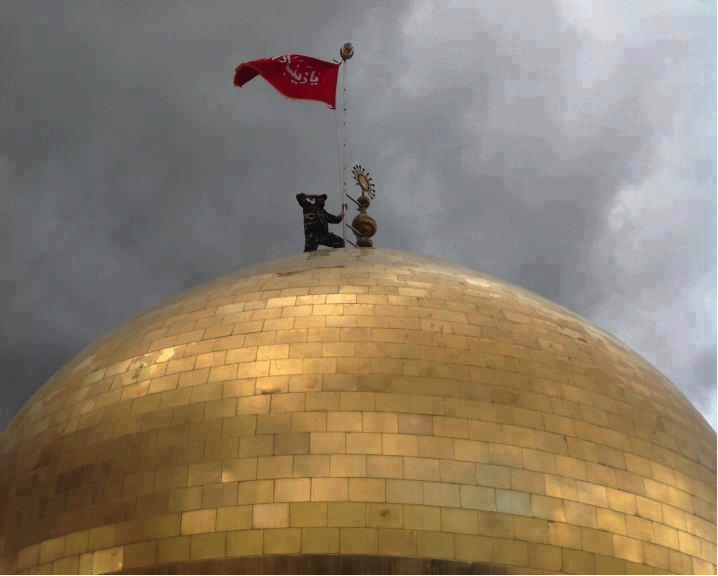
Figure 3: A photo of a LAFA member raises the red flag reading, “Ya Zaynab” (“O Zaynab”). (Source: Facebook).
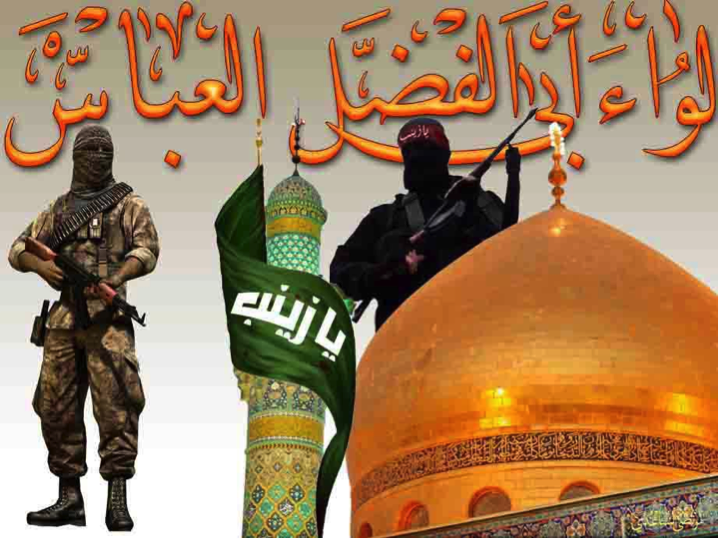
Figure 4: An example of the Zaynab Shrine in LAFA propaganda. “Liwa’a Abu Fadl Al-Abbas” is written in Arabic calligraphy. Wrapped around the shrine’s minaret is a flag reading, “Ya Zaynab” (“O Zaynab”). (Source: Facebook).

Figure 5: 7.62×39 rounds (the round used in the AK-47) have been arranged to spell, “Ya Ali” (O, Ali). The Ali reference refers to Imam Ali Ibn Abi Talib. For the Shia, he is considered the first Imam, his family. The ammunition also forms the Zulfiqar, Ali’s double pointed sword, which represents divinely guided power. (Source: Facebook).
Iranian-Backed Groups & Liwa’a Abu Fadl al-Abbas
The foreign fighter element of Liwa’a Abu Fadl al-Abbas has caught the attention of many analyzing the group. A key factor for new militia is that the majority of fighters killed come from both Iraq and Lebanon. The original parties they were aligned with were either beholden to Iranian radical ideology or created with Iranian aid. This factor points to a more direct Iranian involvement with the organization’s creation.
There has been a preponderance of reports citing large number of Iraqi Shia who have joined the group. Pro-LAFA social media is rife with many individuals praising Iraqi Shia efforts with the group. However, there have also been numerous Lebanese Shia—mainly Hizballah members—who fight or have fought with the group.
Journalist Nicholas Blanford identified that Hizballah involvement with the militia could be determined due to their utilization of semi-automatic fire, “a technique taught to Hezbollah combatants to improve accuracy and save ammunition”.[8] The clothing worn by LAFA members also points to another Hizballah-LAFA connection.[9] However, the links between the two organizations are far deeper than similar weapons techniques and uniforms.
As far back as August, 2012, there was unconfirmed evidence that Hizballah had positioned itself around the Zaynab shrine. At that time, Hassan Selim Meqdad, a Lebanese Shia was captured by Syrian rebels and was accused of being a Hizballah operative fighting in Syria. His family and Hizballah both denied the claims.[10] When Meqdad was filmed, he told his captors he was one of 250 Hizballah members who were based at the Zeinab Shrine and tasked with its defense.[11] While his answers were clearly attained under duress and possibly torture, there have been other more concrete examples demonstrating Lebanese Hizballah’s involvement with Liwa’a Abu Fadl al-Abbas.
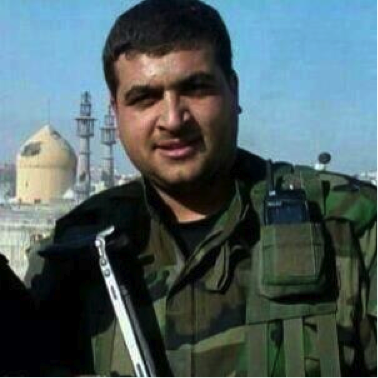
Figure 6: A photo of Lebanese Hizballah’s Haidar Haj Ali fighting in Damascus’s Midan neighborhood with LAFA. In the background stands the damaged Hazrat Sakina Shrine.
In April, 2013, it was announced that Hizballah member, Haidar Haj Ali was killed while performing his “Jihad duties”—a common euphemism for Lebanese Hizballah to describe its members killed in Syria.[12] Ali was filmed firing a B10 recoilless rifle on a rooftop in the Damascus neighborhood of Midan. The damaged dome of the Hazrat Sakina Shrine can be viewed in the background.[13] The film was initially posted online (on YouTube and then recast on LAFA Facebook pages) as an example of the Abu Fadl al-Abbas Brigade defending the neighborhood. Even after it became known that Haidar Haj Ali was a Hizballah member, the video was circulated around most major pro-LAFA Facebooks and forums as an example of LAFA’s fighting abilities.
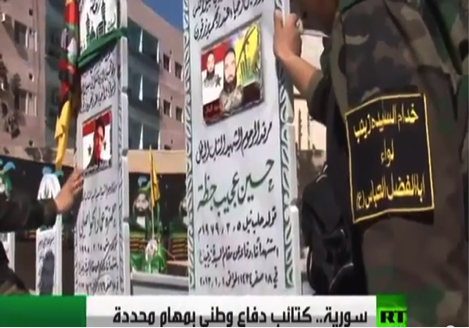
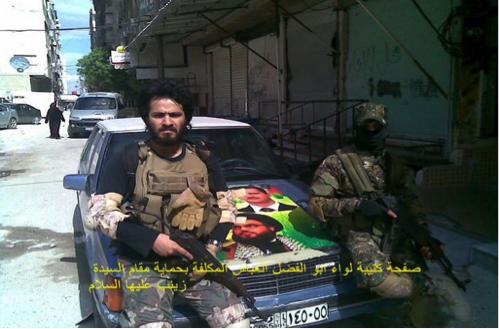
Figure 7 (Left): A screen capture from a Russia Today-Arabic report on Liwa’a Abu Fadl al-Abbas. The marker on the right features a dead fighter who may have been with Hizballah. Both the Syrian and Hizballah flags are pictured. Between the two tombstones another Hizballah flag stands in front of a poster of the revered Al-Abbas Ibn-Ali. (Source: YouTube).
Figure 8 (Right): Two Abu Fadl al-Abbas members rest on a car’s hood. The car is decorated with Bashar al-Assad and Hizballah leader Sayyid Hasan Nasrallah posters. (Source: Facebook).

The utilization of Hizballah iconography also serves as another giveaway that the group is built along the Hizballah-model. In many photos posted on social media, Hizballah symbols are often more common with Abu Fadl al-Abbas fighters than their own symbol. Logos for other pro-Iranian Iraqi Shia groups is also sparse. Thus far, the Brigade has only utilized simple patches with the group’s name emblazoned on them. At most, their more official symbol has only been seen online, particularly in their videos and semi-official photo releases. Since March, 2013, these releases have primarily occurred on YouTube and Facebook.
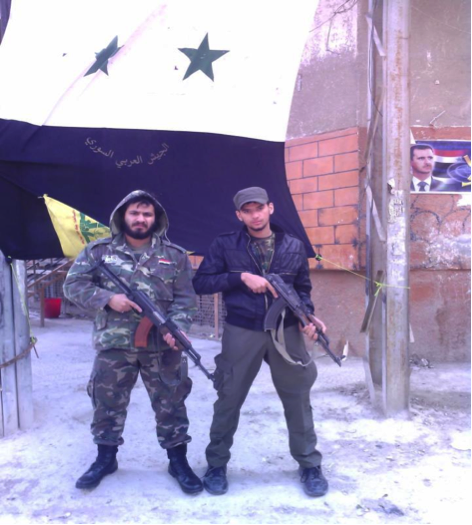
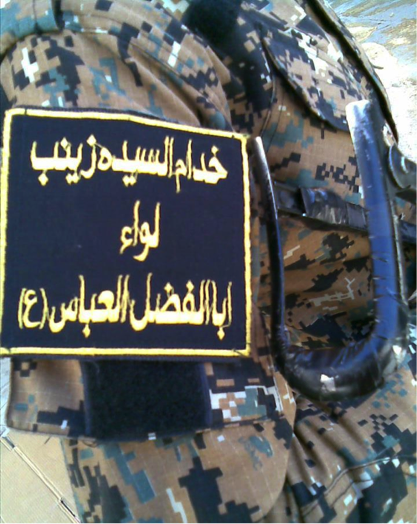
Figure 9 (Left): Behind an Abu Fadl al-Abbas Brigade member standing on the left, a Hizballah flag droops in front of a Syrian flag bearing “Al-Jaysh Arabi Suri” (“The Syrian Arab Army”). (Source: Facebook).
Figure 10 (Right): In Arabic the patch reads, “Khadam al-Saydeh Zaynab Liwa’a Abu Fadl al ‘Abbas”, or “Servants of the Lady Zaynab Abu Fadl al-Abbas Brigades”. It is interesting to note that the uniform’s camoflauge appears to be pattered off the U.S. woodland MARPAT design.
Examples of this camoflague can also be found in Iraq. (Source: Facebook).
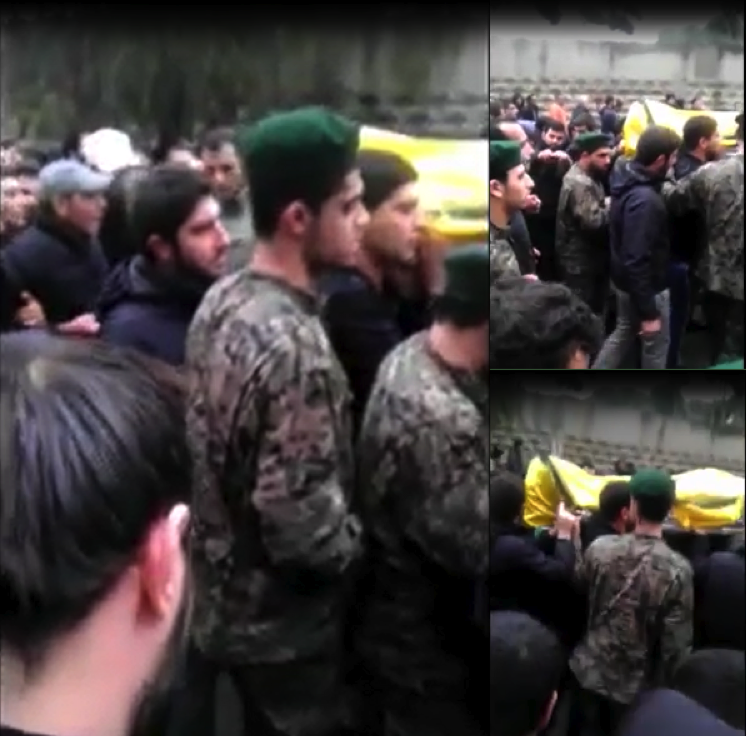
Figure 11: The funeral for Rabieh Mahmud Fares. Fares was a Hizballah fighter killed in Syria. The same pattern of MARPAT-style camouflage worn by the Abu Fadl al-Abbas militants is also worn by Hizballah fighters. (Source: YouTube).
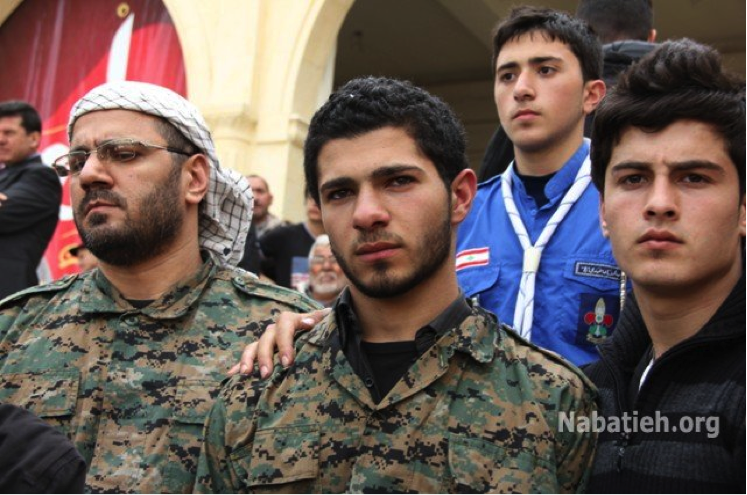
Figure 12: The same MARPAT-style camouflage worn by Hizballah members at the funeral for Haidar Hajj Ali. (Source: Nabatieh.org).
Leadership:
Like Lebanese Hizballah, Kata’ib Hizballah, and Asa’ib Ahl al-Haq, Liwa’a Abu Fadl al-Abbas has a designated “Secretary General”, Abu ‘Ajeeb. Little is known about ‘Ajeeb. Pro-Free Syrian Army forums and Facebook pages reported Abu ‘Ajeeb was captured on April, 2, 2013 by units belonging to Syria’s Al Qaida branch, Jabhat al-Nusra.[14] However, LAFA responded by posting a number of photographs of Abu ‘Ajeeb on their many Facebook pages. Another commander named by the group is Abu Hajar. It is likely both Abu Hajar and Abu ‘Ajeeb are both nom de guerres.
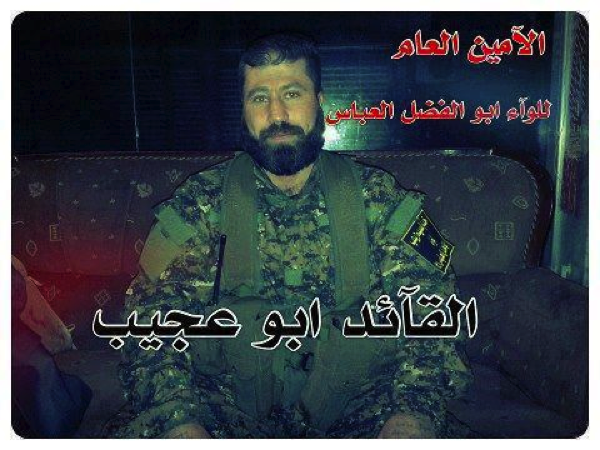
Figure 13: Abu ‘Ajeeb.
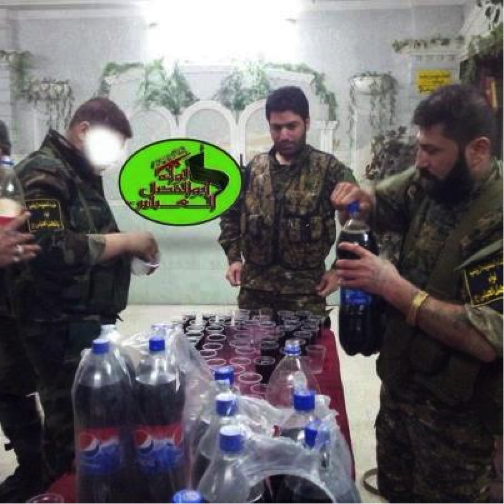
Figure 14: Abu ‘Ajeeb and other LAFA militants drinking Pepsi. (Source: Facebook).
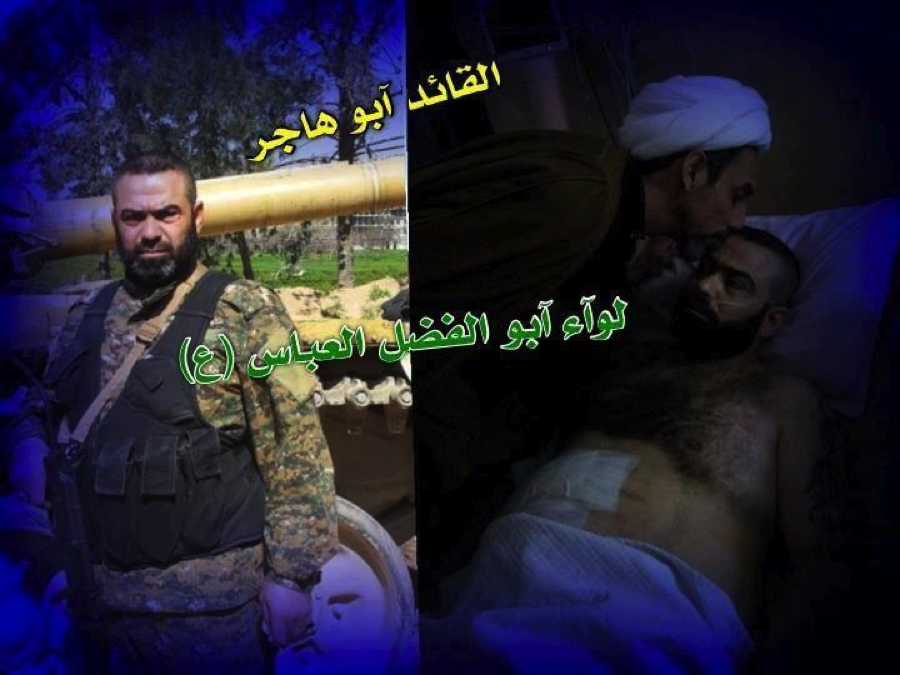
Figure 15: Abu Hajar is pictured with a Syrian tank and in a hospital bed after being wounded. The yellow text reads, “Al-qaid Abu Hajar” (“The commander Abu Hajer”). (Source: Facebook).

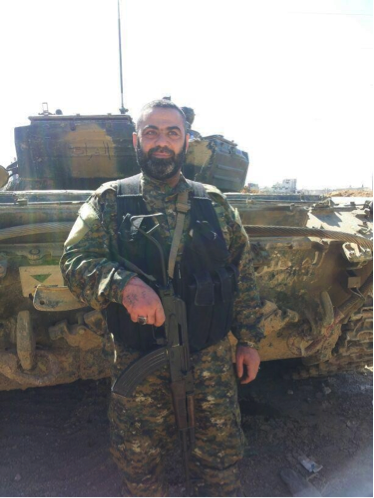
Figure 16: Abu Hajar poses in two photos with a Syrian army T-72 tank. (Source: Facebook).

Figure 17: Abu ‘Ajeeb poses with two other LAFA militants. (Source: Facebook).
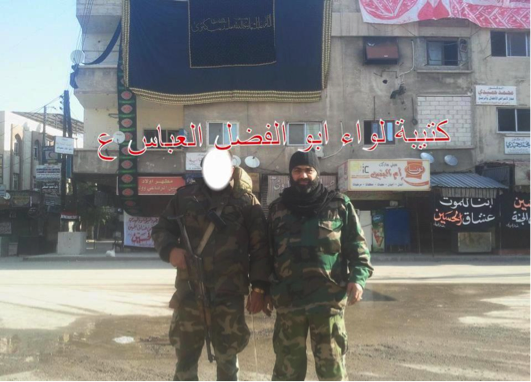
Figure 18: Abu Hajar stands with another LAFA fighter in the area around the Zaynab Shrine. (Source: Facebook).
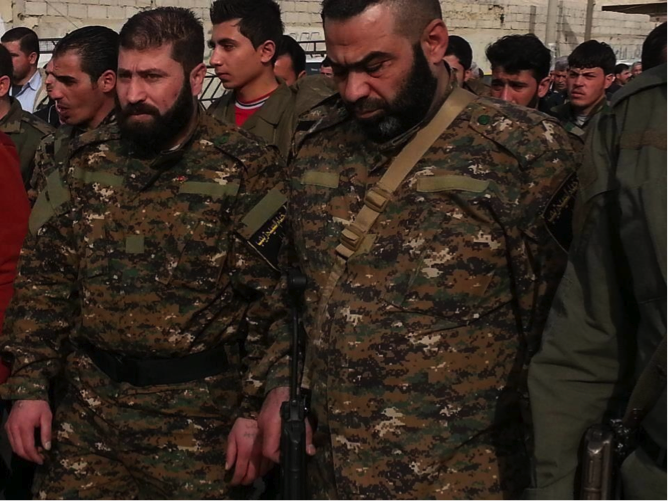
Figure 18: Abu ‘Ajeeb (left), Abu Hajar (right), and other LAFA members.
A Close Relationship With the Syrian Army
There are strong indicators that the group, instead of operating as an independent entity and simply fighting for the “Protection of the shrine”, is in fact being utilized as another unit for the larger Syrian Army. Photos of LAFA members posing with Syrian army and police armored vehicles demonstrate some level of coordination. Also, some videos of LAFA personnel using heavy Syrian army equipment confirm the group operates alongside the Syrian army. Nevertheless, it is unknown whether the group has been utilized as an infantry component which compliments Syrian army units in other parts of Damascus.
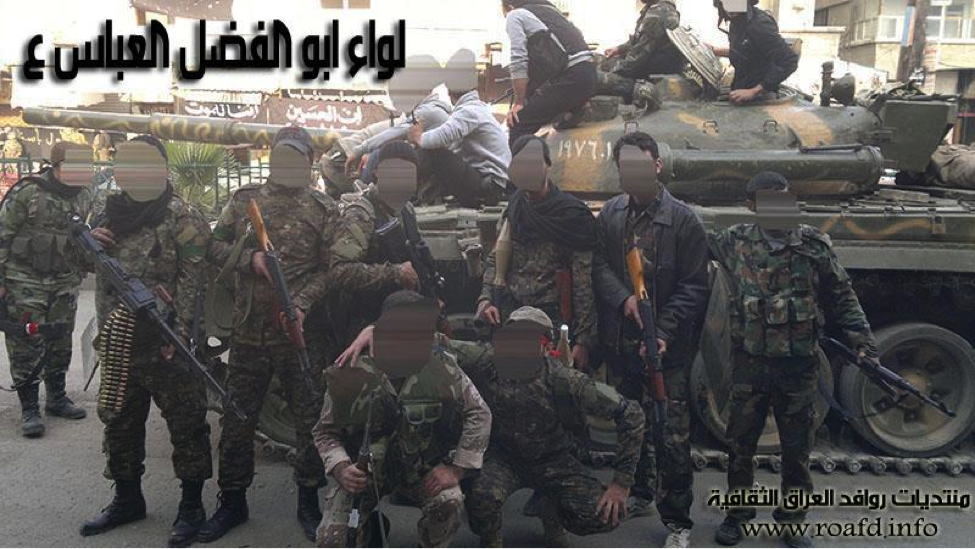
Figure 19: Abu Fadl al-Abbas members pose in front of a Syrian Army T-72. (Source: Roafd.info. Note: Roafd.info is a leading pro-Muqtada al-Sadr forum website).
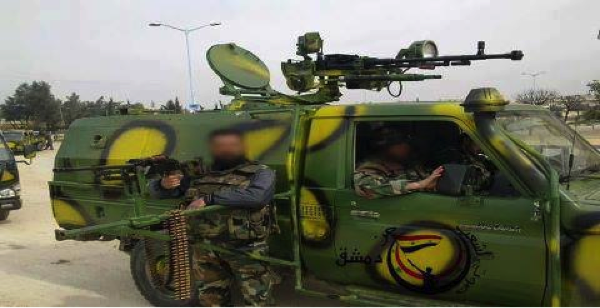
Figure 20: Abu Fadl al-Abbas members using a National Defense Force (NDF or Jaysh al-Sha’bi [People’s Army]) vehicle. (Source: Facebook).

Figure 21: Armed with a PKM machine gun, a member of the Abu Fadl al-Abbas Brigade stands in front of a Syrian police BRDM-2 armored personnel carrier. (Source: Facebook).
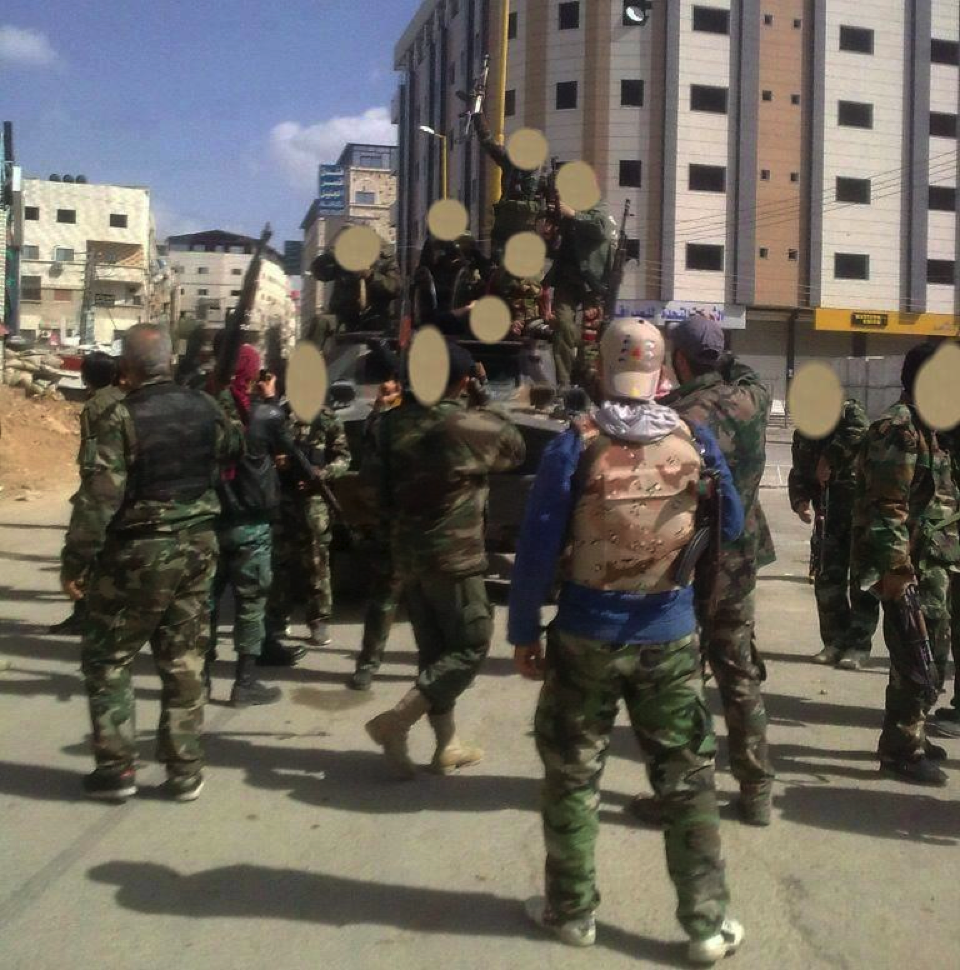
Figure 22: A group of Abu Fadl al-Abbas fighters collect around and on top of a Syrian army armored personnel carrier. (Source: Facebook).
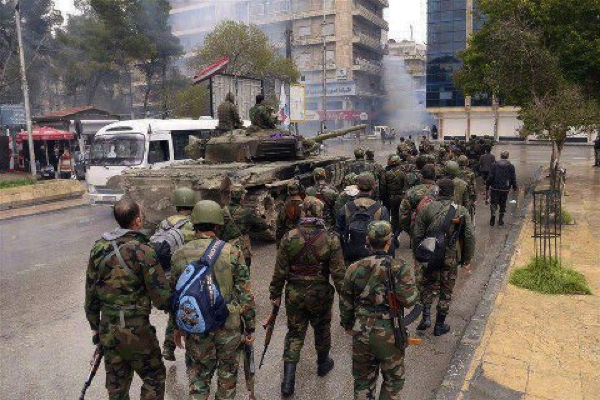
Figure 23: Abu Fadl al-Abbas members offer infantry support for a Syrian army T-72. (Source: Facebook).

Figure 24: An Abu Fadl al-Abbas fighter poses with an RPG-7 on an upgraded Syrian army T-72M1 with explosive reactive armor. (Source: Facebook).
Figure 25: The video reportedly shows Karar Abed al-Amir Fatlawi Abu Assad, an Iraqi member of Asa’ib Ahl al-Haq and LAFA militant, firing a Syrian army artillery piece.
When Liwa’a Abu Fadl al-Abbas is Not Fighting:
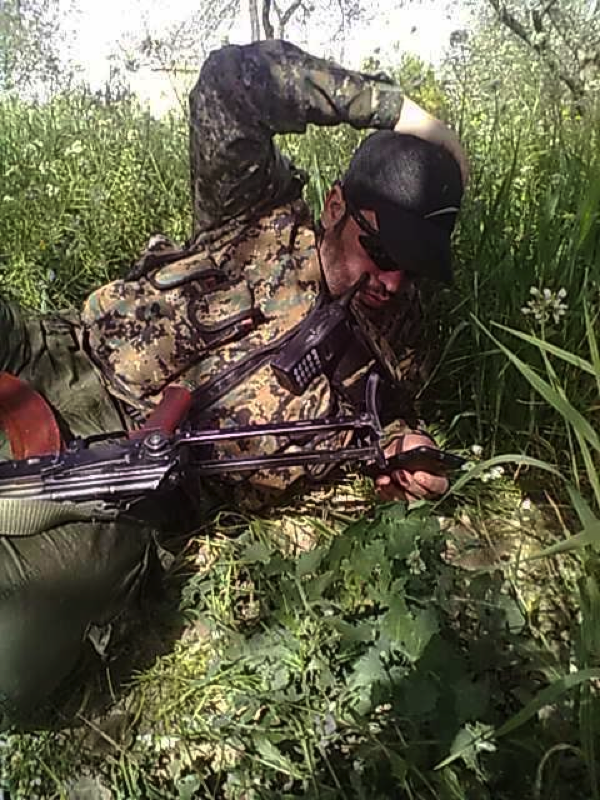
Figure 25: A fighter checks his smartphone in a non-urban setting.

Figure 27: An Abu Fadl al-Abbas militiaman shows off a photo of Grand Ayatollah Sadiq al-Sadr, demonstrating this fighter is likely an Iraqi.
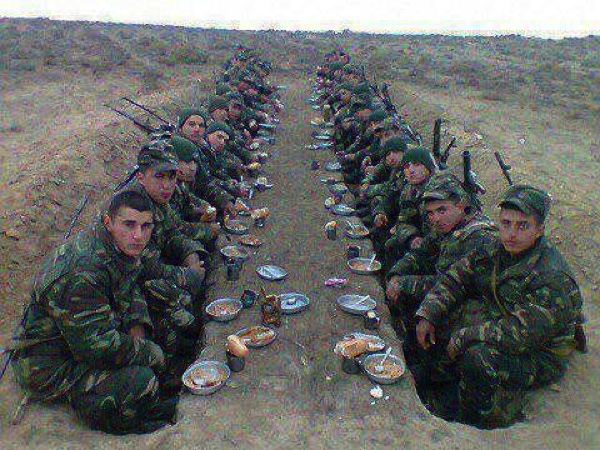
Figure 28: LAFA members share a meal in a trench.
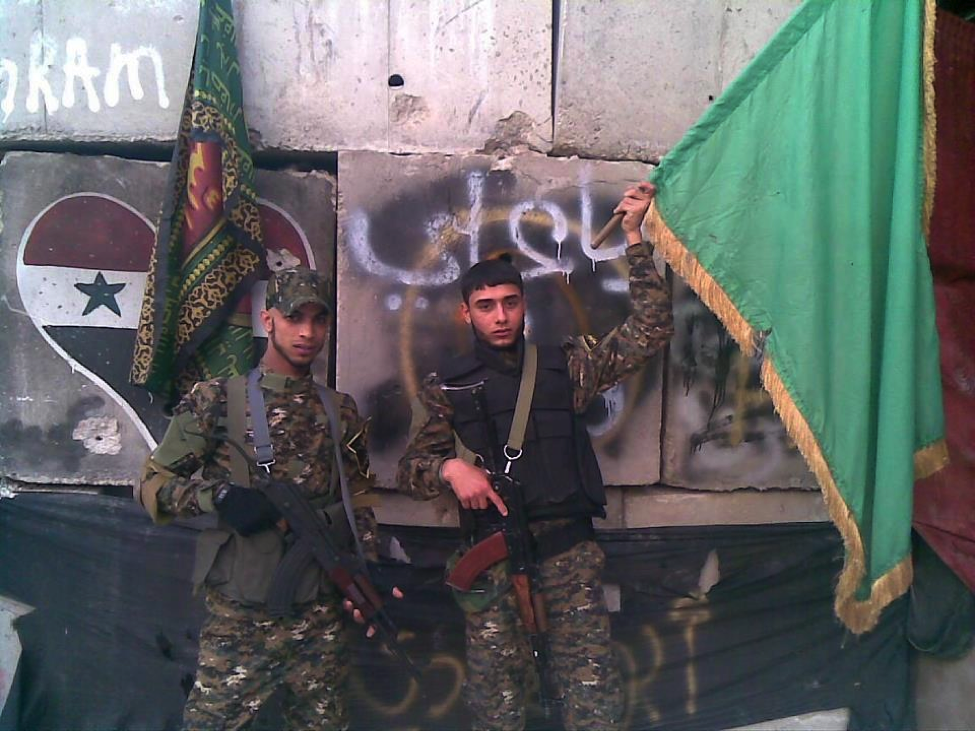
Figure 29: Two LAFA members pose with Shia flags in front of graffiti reading, “Ya ‘Ali” (“O Ali”).
The Snipers of Abu Fadl al-Abbas
A reoccurring theme found in many photos of Abu Fadl al-Abbas is the preponderance of sniper rifles. Most of the sniper weapons photographed are Russian-designed, 7.62×54 caliber, SVD or “Dragunov”.
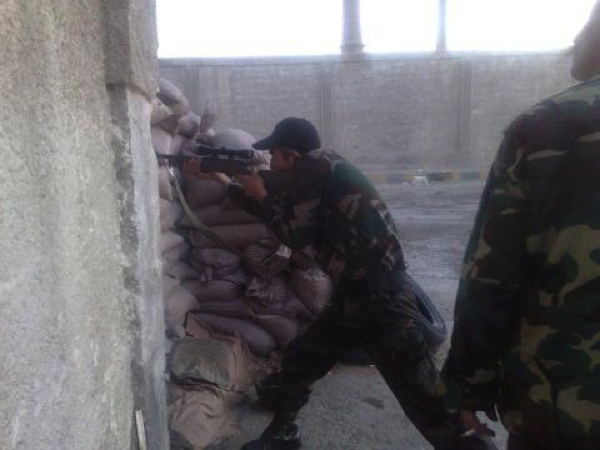
Figure 30: An Abu Fadl al-Abbas militiaman with a bolt-action sniper rifle engaged in combat.

Figure 31: An Abu Fadl al-Abbas militiaman takes aim with a modernized version of the “Dragunov”-style rifle, the Russian SVDS rifle.
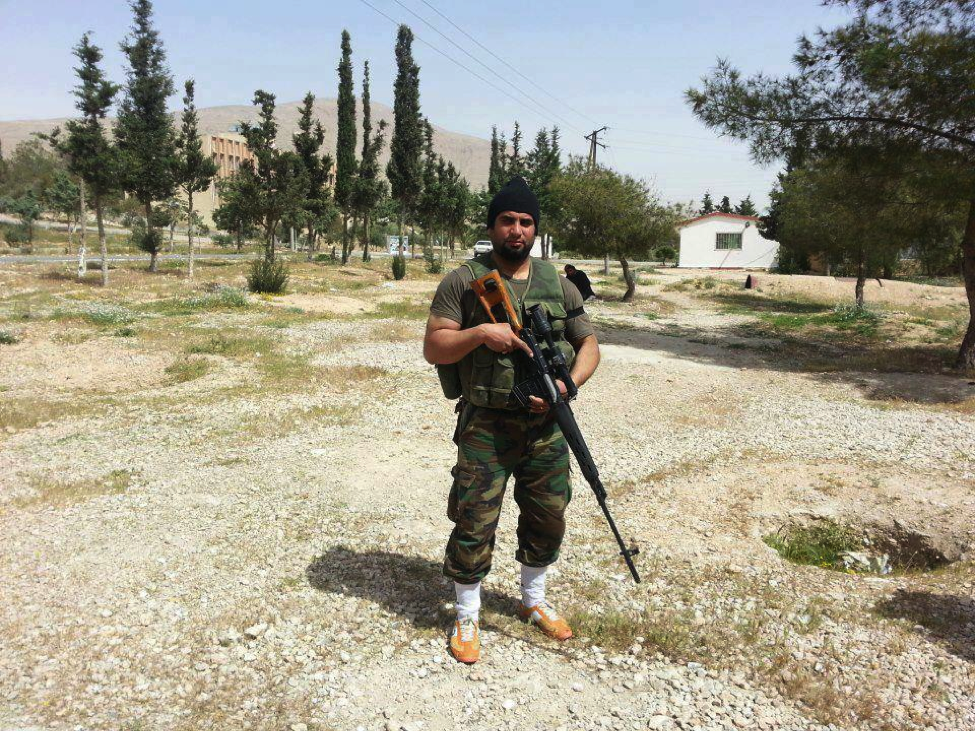
Figure 32: Karar Abed al-Amir Fatlawi Abu Assad, a member of Iraq’s Asa’ib Ahl al-Haq who was killed fighting as a member of LAFA, poses with an SVD “Dragunov” rifle.

Figure 33: A member of Abu Fadl al-Abbas grabs a nap with his SVD “Dragunov”-style rifle.
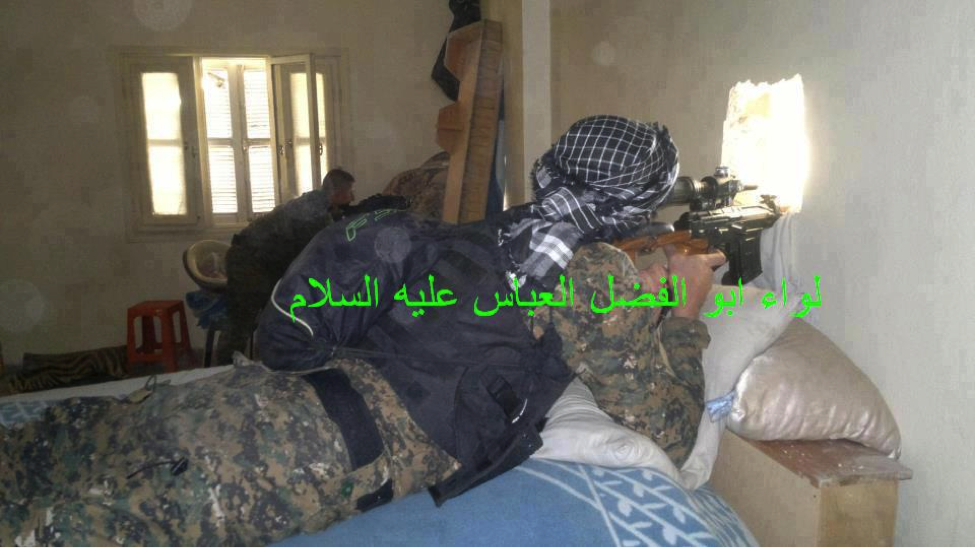
Figure 34: Another Abu Fadl al-Abbas fighter takes aim with his SVD “Dragunov” type rifle. (Source: Facebook).
LAFA In Combat:
LAFA’s videos and photographs have demonstrated it is a unit which has knowledge of more advanced urban warfare tactics. Most small-arms pictured with LAFA fighters appear new types of Soviet or Russian design. In addition, the group has access to artillery, a variety of modified trucks (known as “technicals”), and mortars.
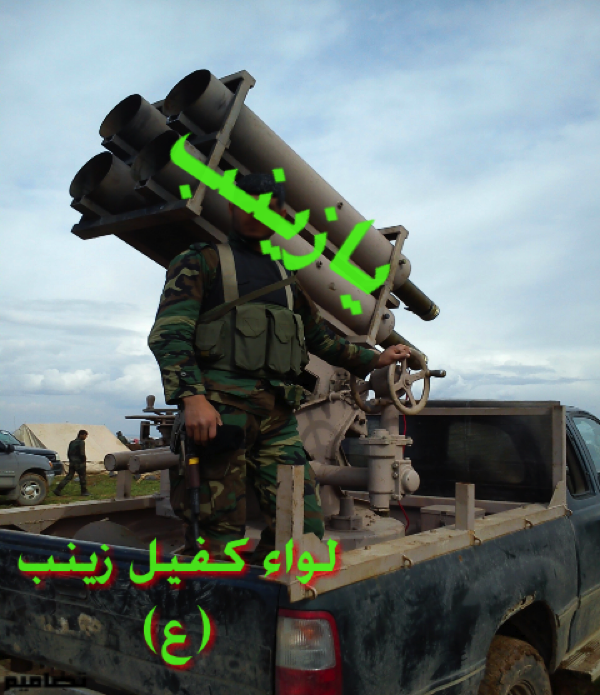
Figure 35: According to one pro-LAFA Facebook page, this photo shows an Iraqi LAFA member. He sits in the bed of a pickup truck with a 4-barrel rocket launcher. The same vehicle was shown launching a rocket in a video released by a pro-LAFA Youtube/Facebook page in April (See above video). (Photo Source: Facebook. Video Source: YouTube).
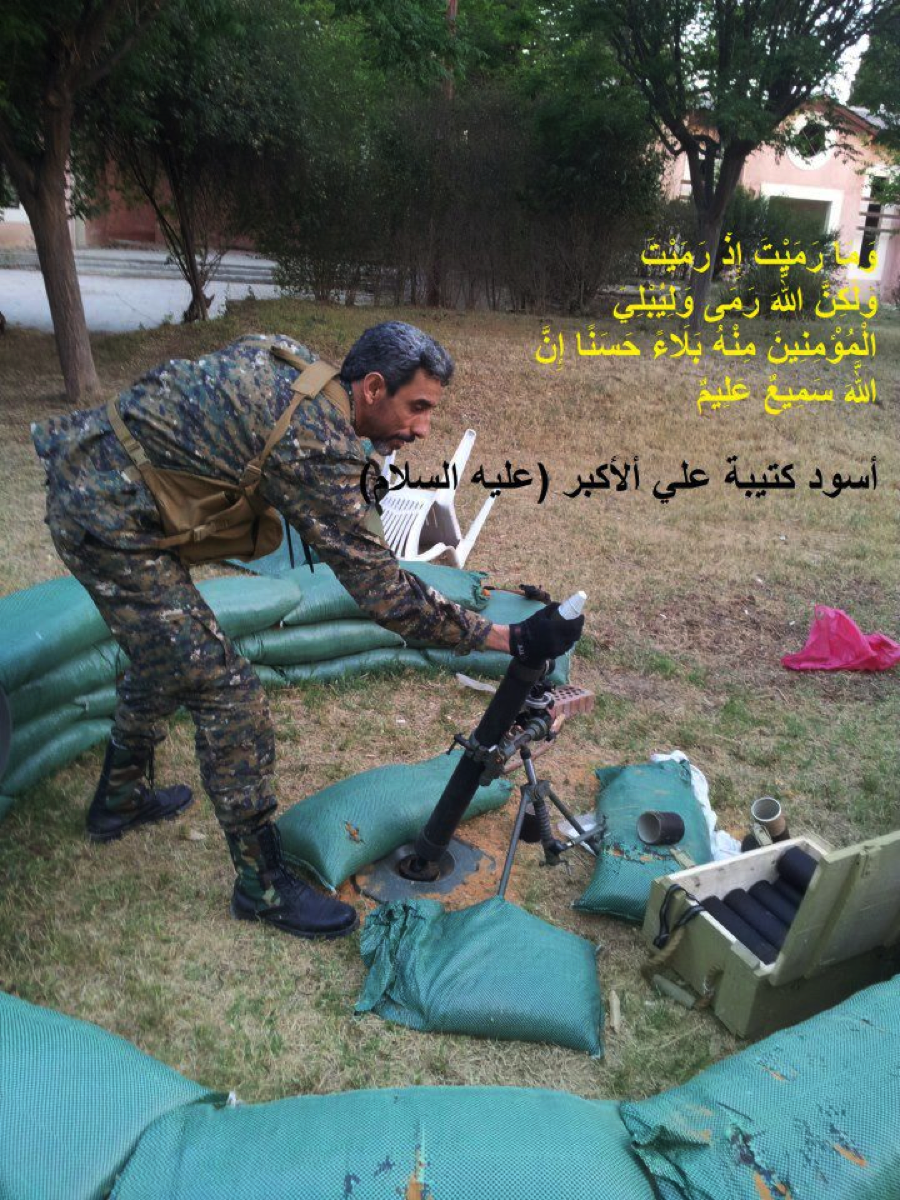
Figure 36: A LAFA fighter loads a mortar. (Source: Facebook).
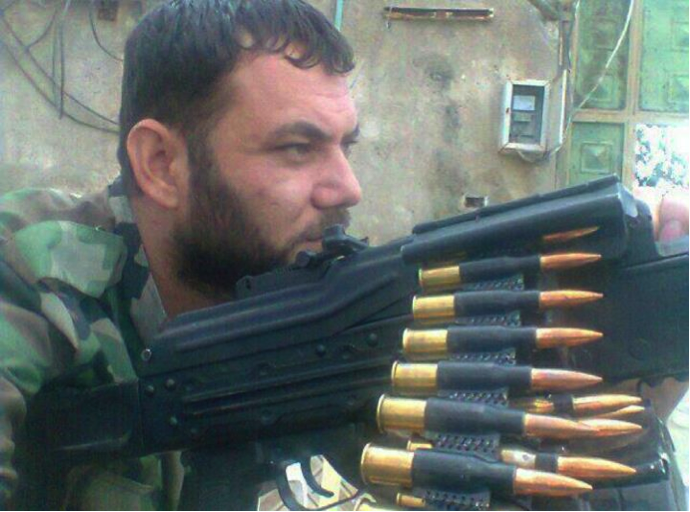
Figure 37: A LAFA member mans a PKM machine gun. (Source: Facebook).
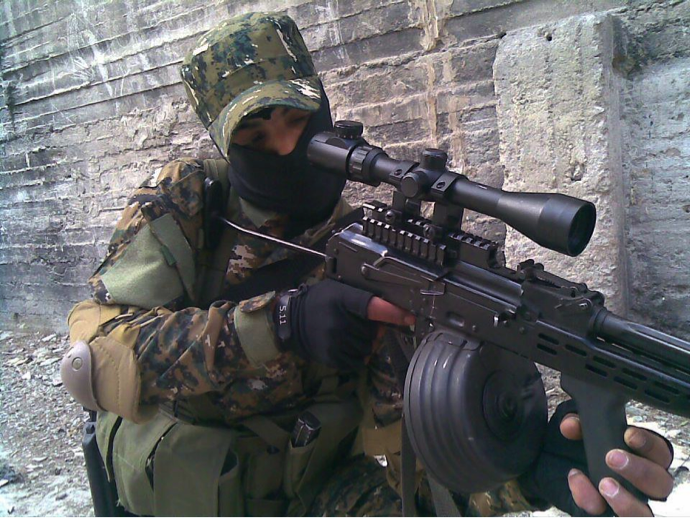
Figure 38: LAFA member with a Bulgarian AMD-65 rifle, 75 round drum magazine, and optics.
“Warning: Graphic”
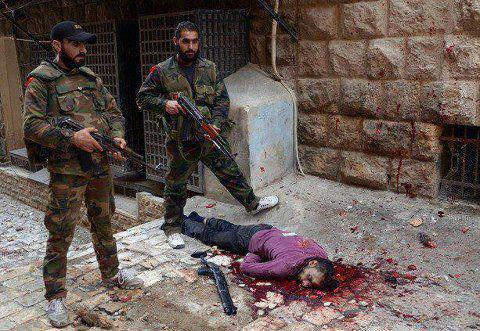
Figure 39: LAFA members stand over a killed rebel fighter. (Source: Facebook).

Reblogged this on YALLA SOURIYA.